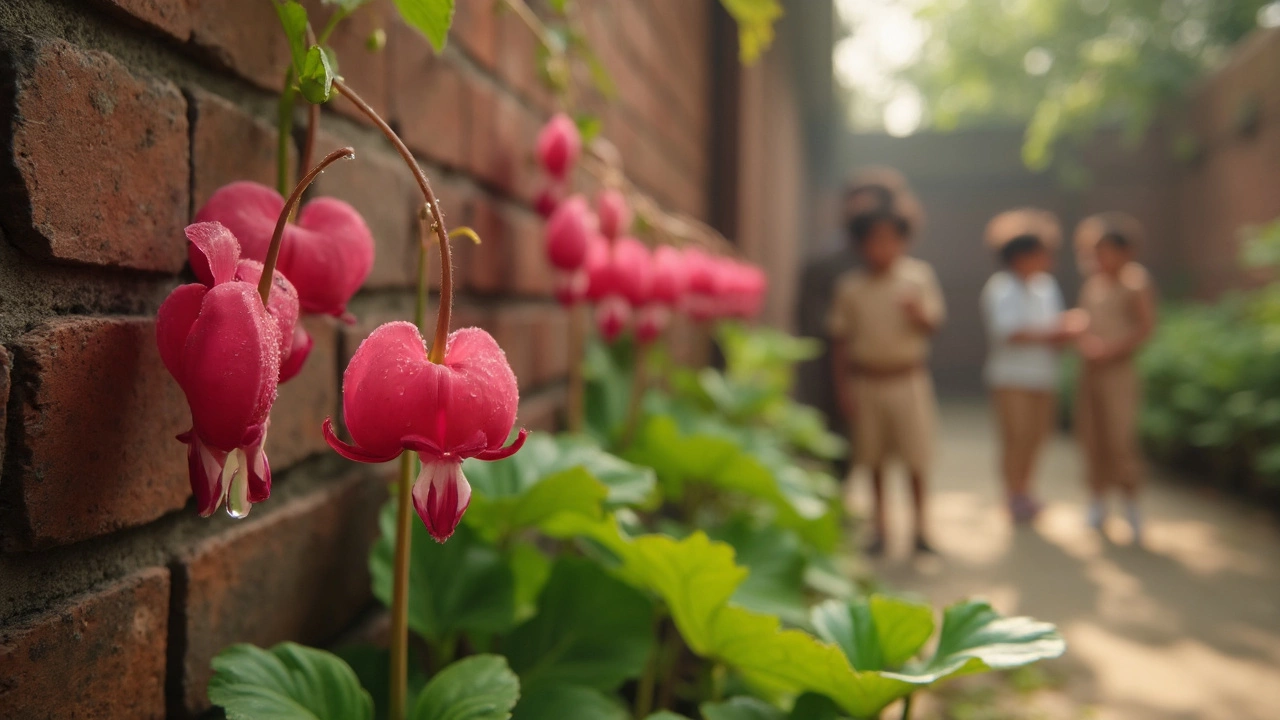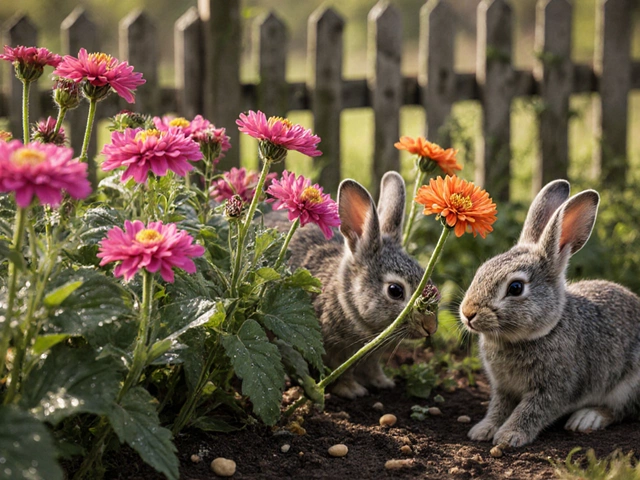Here's a question that gets tossed around a lot in gardening groups: Do bleeding heart plants return every year, or are they a one-season wonder? The good news is, bleeding heart (those dramatic, heart-shaped flowers that almost look fake) are perennials. You might plant them once and, with basic care, watch them pop up year after year.
But before you rush out to plant a bunch, there’s a catch: These guys like to vanish mid-summer, right when you’re bragging to friends about your garden. Don’t panic—they’re not dead. They just go dormant. Picture a seasonal power nap.
If you’re hoping for a flower that sticks around all season, bleeding hearts might test your patience. Still, if you give them the right spot and don’t freak out when they disappear, you’ll get that comeback next spring. It’s honestly as easy as basic watering and planting them somewhere shady and cool. No need for fancy fertilizer or complicated pruning schedules.
- What Makes Bleeding Heart a Perennial
- Best Growing Conditions for a Comeback
- Seasonal Care and Dormancy
- Troubleshooting: When They Don’t Return
- Cool Tips for Kitchen Gardeners
What Makes Bleeding Heart a Perennial
If you’ve ever wondered why bleeding heart keeps showing up in spring while your annuals don’t, it comes down to one thing: their roots don’t die off after their flowers fade. Bleeding heart plants store energy underground in their tuberous roots, which lets them bounce back year after year. This is what makes them different from annuals, which finish their life cycle in one season.
There are a few types out there, but the old-school favorite—Dicentra spectabilis—has been loved for generations and does this perennial trick perfectly. Some modern varieties might have smaller blooms or different colors, but the perennial behavior stays the same.
Don’t just take my word for it. As the Royal Horticultural Society puts it:
“Bleeding hearts are hardy perennials whose underground roots carry them safely through winter dormancy, so they return reliably each spring without replanting.”
This is honestly why they’re a staple for folks looking for easy, low-maintenance beauty. Plant them once, and—if they’re happy—expect them to hang around for years. I’ve had one in a partly shaded spot that’s come back strong every spring for close to seven years now. It’s no fluke; they’re built for this.
And if you’re worried about harsh winters killing your plants off, don’t stress! Bleeding heart has some serious cold tolerance. Most can survive in USDA Zones 3 to 9, which covers basically all but the hottest and coldest parts of the U.S. Here’s a quick look at their hardiness for reference:
| USDA Zone | Winter Min Temp (°F) | Bleeding Heart Survival |
|---|---|---|
| 3 | -40 to -30 | Yes |
| 5 | -20 to -10 | Yes |
| 7 | 0 to 10 | Yes |
| 9 | 20 to 30 | Yes |
So, as long as those roots get a little winter rest, you’ll see your perennial plants show up with those iconic heart-shaped flowers each year—no digging or fuss required.
Best Growing Conditions for a Comeback
If you want your bleeding heart to be a reliable guest in your kitchen gardening setup every year, getting the conditions right is key. This plant is pretty forgiving, but there are some non-negotiables for those comeback vibes.
First, let’s talk shade. Bleeding hearts don’t like to roast in the sun all day. Give them light shade or dappled sunlight, especially during the hottest part of the afternoon. If things get too bright, the leaves crisp up, and the flowers bail early. Think under a tree, beside a north-facing fence, or in a spot that gets morning light but is protected by noon.
The next biggie: soil. Bleeding hearts love it loose and rich in organic matter, with good drainage. Soggy soil? Not their thing—they’ll just rot. If your yard is pure clay, mix in compost or peat to help. Aim for a spot where water never pools after it rains.
Here's a quick cheat sheet to nail your setup:
- Light: Partial to full shade works best.
- Soil: Moist but well-draining, loaded with compost or leaf mold.
- Water: Keep soil evenly moist, but don’t flood them. Water a bit more during hot, dry weeks.
- Spacing: Give each plant at least 18 inches to breathe. They spread wider than you'd think.
- Mulch: Add 2-3 inches to lock in moisture and keep the roots cool.
Extra tip: In zones 3-9 (most of the US and Europe), they’re perennial champs. But down south, if it gets way too hot, they might need more shade and water to keep them from vanishing too soon.
| Quick Growing Conditions | Ideal Range |
|---|---|
| Light | Partial/Full Shade |
| Soil pH | 6.0-7.0 (slightly acidic to neutral) |
| Spacing | 18-24 inches |
| Hardiness Zones | 3-9 |
| Bloom Time | Spring-Early Summer |
If you get these basics sorted, your bleeding hearts should be set to roll out those pink (or sometimes white) flowers every spring without needing much extra help. That means more time sipping lemonade and less time fussing with plant drama.

Seasonal Care and Dormancy
Bleeding heart plants have an odd little habit: once the heat of summer kicks in, their leaves start to turn yellow and then collapse. If you’re new to these perennial plants, you might think you messed something up. But that’s just what bleeding hearts do. They go dormant when summer gets too hot. It’s their normal survival trick, not a sign of poor health.
The best thing you can do is leave the dying foliage alone. The leaves are still feeding the roots under the soil, helping the plant refuel so it can pop back next spring. Kitchen gardening fans, don’t try to trim off all the yellow stuff too soon. Only clean it up when it’s fully dried out and just falls away by itself.
When watering, keep the soil moist during spring and early summer. Once your bleeding heart starts fading, you can back off—overwatering a dormant plant is just asking for root rot. Mulching with a couple inches of shredded bark or leaf litter is smart too. This helps hold moisture in and keeps the roots cool, which these plants prefer.
Here’s a quick week-by-week look at their typical yearly routine:
| Season | What Bleeding Heart Does |
|---|---|
| Early Spring | New shoots and leaves pop up |
| Mid to Late Spring | Flowers bloom and look stunning |
| Early Summer | Leaves start to yellow, plant prepares for dormancy |
| Late Summer | Above-ground part disappears |
| Fall/Winter | Roots rest underground, no action up top |
If you’re growing other stuff nearby—like herbs or salad greens—give your bleeding heart a little space to do its thing undisturbed. Their dormancy is a chance for those other plants to take over, so the space doesn’t look bare once bleeding hearts disappear.
Troubleshooting: When They Don’t Return
So, you’re strolling through your kitchen garden in spring and—your bleeding heart plants are nowhere in sight. Panic mode? Not so fast. Before assuming the worst, let’s run through a checklist of common reasons they might skip a season or vanish for good.
- Too Much Wetness or Dryness: Bleeding heart plants really hate sitting in soggy soil, but they don’t like totally dry ground either. Root rot is a top killer, especially if drainage isn’t great. On the flip side, a drought or forgetting to water them as they go dormant can dry them out permanently.
- Bad Winter: An extra cold winter with no snow cover can freeze the roots, especially if you’re in USDA zone 2-3. Oddly warm winters (followed by a sudden cold snap) can also mess them up.
- Poor Soil or Wrong Spot: These perennials get fussy if planted deep in clay or heavy sand. Insufficient shade or too much harsh sun fries them, especially in July and August.
- Pests or Disease: Slugs, snails, and even rabbits sometimes chomp on fresh shoots. Wilt or fungal diseases can take the whole plant out before you notice.
- Accidental Digging: Let’s be real—sometimes you forget the exact spot, dig there, and ruin the dormant roots without realizing it!
If you still have no sign of life, try this: scratch the soil gently where the crown should be. If it’s mushy, the roots probably rotted. If it’s hard and dried out, they might’ve died from drought or rough winter conditions.
Here’s a quick-look table to see the most common reasons why bleeding heart plants don’t return:
| Problem | Sign | Fix |
|---|---|---|
| Root rot (too wet) | Mushy or smelly roots | Improve soil drainage |
| Drought (too dry) | Brittle, dried roots | Water more during dry spells |
| Cold damage | No shoots after winter | Add mulch in fall for warmth |
| Wrong spot | Plants faded before dormancy | Move to partial shade |
| Pest issues | Nibble marks or missing shoots | Use barriers or slug bait |
If all else fails, don’t beat yourself up. Bleeding heart plants are beautiful but a bit unpredictable, especially for anyone new to kitchen gardening. Now you know what to look for, you can give these perennials another shot next year.

Cool Tips for Kitchen Gardeners
Want to get the most from your bleeding heart plants in your kitchen garden? Here are some tricks that really work—no fancy skills required.
- Keep them cool: Bleeding hearts love shade. Tuck them under tall veggies like corn or among herbs that don’t hog the sun. Too much sunlight, and their leaves can turn crispy almost overnight.
- Mulch is your friend: A two-inch mulch layer keeps the soil moist and cool. It cuts down on weeds, too, so less upkeep for you.
- Don’t crowd them: Leave about a foot between your bleeding heart and other plants. This stops fungus and lets those heart-shaped flowers really show off.
- Mark the spot: Once these perennials go dormant in summer, it’s almost impossible to remember where you planted them. Pop in a plant marker, or you could dig up their roots by accident when turning the soil for your next crop.
- Pair wisely: Bleeding hearts mix well with hostas, ferns, or shade-loving herbs like mint or chives. When the hearts disappear for the season, these buddies will fill the space so you don’t get a bare patch in your garden.
According to the Royal Horticultural Society, “Bleeding hearts are easy to grow but dislike disturbance—plant them once and let them be.”
"Once established, Dicentra (bleeding heart) will return even after harsh winters, provided the soil is well-drained and they're not waterlogged." — Royal Horticultural Society
Here’s a quick look at how bleeding hearts stand up to different growing conditions, so you know what to expect:
| Condition | How Bleeding Heart Reacts |
|---|---|
| Full sun | Stressed, yellow leaves, shorter bloom |
| Partial shade | Healthy, long-lasting flowers |
| Wet feet | Root rot risk, may not return |
| Well-drained soil | Strong growth, yearly comeback |
If you follow these easy tips and give bleeding heart plants a comfy home, you’ll help them bounce back every year—making your kitchen garden look gorgeous with no extra hassle.




